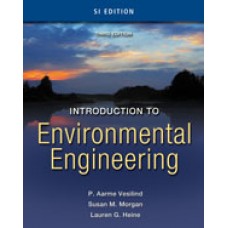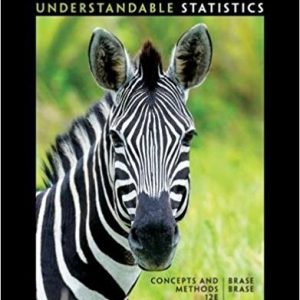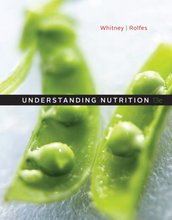Instant download Solution Manual for Introduction to Environmental Engineering – SI Version, 3rd Edition pdf docx epub after payment.

Product Details:
- ISBN-10 : 049529585X
- ISBN-13 : 978-0495295853
- Author: P. Aarne Vesilind; Morgan;…
This text presents a balanced treatment of environmental engineering by combining engineering concepts with the importance of environmental ethics. This third edition highlights sustainable development and emphasizes the need for engineers to become even more environmentally responsible during this time of increasing awareness of environmental concerns. The authors challenge students with problems that require not only a technical solution but a thorough consideration of its ethical ramifications. The text also provides comprehensive exposure to all types of environmental problems, including ecosystem dynamics, wastewater treatment, and air pollution control.
Table Of Contents:
Cover……Page 1
Contents……Page 6
About This Book……Page 15
1.2 What’S Your Definition Of Environmental Engineering?……Page 18
1.3.2 A Lousy Report Card……Page 19
1.4 Duties And Important Characteristics Of Environmental Engineers……Page 20
1.4.4 Government……Page 21
1.5.1 Love Canal……Page 22
1.5.2 Milwaukee Cryptosporidiumoutbreak……Page 23
1.6.2 Professional Licensure……Page 24
1.6.3 Engineering Ethics……Page 25
1.6.4 Continuing Education……Page 26
1.7 Problem Solving……Page 27
Summary……Page 29
Exercises……Page 30
References……Page 31
2.2 Dimensions And Units……Page 32
2.3.1 Density……Page 35
2.3.2 Concentration……Page 37
2.3.3 Flow Rate……Page 43
2.3.4 Residence Time……Page 44
2.4 Precision, Bias, And Accuracy……Page 45
2.5 Significant Figures……Page 46
Exercises……Page 47
3.2.2 Elements……Page 49
3.3 Chemical Reactions……Page 54
3.3.1 Stoichiometry……Page 55
3.4.1 Acid-Base Chemistry……Page 59
3.4.2 Strong Acids And Bases Vs.Weak Acids And Bases……Page 62
3.4.3 The Carbonate System And Alkalinity……Page 64
3.5 Solid-Phase Equilibrium Reactions……Page 65
3.6.2 General Gas Laws—Boyle’S, Charles’, Gay-Lussac, Combined Gas……Page 68
3.6.3 Dalton’S Law Of Partial Pressure……Page 70
3.6.4 Raoult’S Law And Henry’S Law……Page 71
References……Page 73
Exercises……Page 74
4.2 Biological Systems……Page 76
4.2.2 Classification Of Organisms……Page 77
4.2.3 Major Groups Of Organisms……Page 78
4.2.4 Microbial Growth……Page 83
4.3 Ecological Systems……Page 86
4.3.1 Energy Flow In Ecosystems……Page 87
4.3.2 Food Chains……Page 88
4.3.3 Bioconcentration, Bioaccumulation, And Toxicity……Page 91
4.4.1 Carbon Cycle……Page 92
4.4.2 Nitrogen Cycle……Page 93
4.4.3 Phosphorus Cycle……Page 96
4.4.4 Sulfur Cycle……Page 97
4.5 Limnological Concepts And Eutrophication……Page 98
4.5.1 Stratification……Page 99
4.5.2 Lake Classification……Page 101
4.5.3 Dissolved-Oxygen Depletion In Streams……Page 102
References……Page 110
Exercises……Page 111
5.1 Concept Or Perception Of Risk……Page 115
5.2 Risk Assessment……Page 118
5.2.2 Toxicity Assessment……Page 119
5.2.3 Exposure Assessment……Page 124
5.2.4 Risk Characterization……Page 127
5.3 Risk Management……Page 129
5.4.2 Environmental Impact Statement……Page 130
Summary……Page 133
Exercises……Page 134
6.2 Chemical And Biochemical Reactions……Page 137
6.2.2 Rate Law And Order Of Reaction……Page 138
6.2.3 Zero-Order Reactions……Page 139
6.2.4 First-Order Reactions……Page 140
6.2.5 Second-Order Reactions……Page 142
6.2.6 Temperature Corrections……Page 145
6.3 Material Balances……Page 147
6.4.2 Reactors……Page 151
6.5.1 Definition Of Energy And Work……Page 160
Exercises……Page 167
7.1 Introduction……Page 171
7.2.2 Green Engineering……Page 172
7.2.3 Material Selection……Page 173
7.3 Nuclear Physics……Page 175
7.3.1 Radioactivity……Page 176
7.4.2 Paper Or Plastic Bags?……Page 182
7.4.3 Selection Of Materials For Beverage Containers……Page 183
7.4.5 Advanced Integrated Wastewater Pond System (Aiwps)……Page 184
References……Page 186
Exercises……Page 188
8.2 Beneficial Uses Of Water……Page 189
8.2.1 Public Supply……Page 190
8.2.6 Industrial……Page 191
8.4 Water Pollution……Page 192
8.5.1 Conventional Water Quality Assessment Parameters……Page 194
8.6.1 Drinking Water Standards……Page 211
8.6.2 Wastewater Effluent Standards……Page 212
8.6.3 Surface Water Quality Standards……Page 213
Summary……Page 214
References……Page 215
Exercises……Page 216
9.1 Introduction……Page 218
9.2.2 Drinking Water Standards……Page 219
9.3.1 Conventional Surface Water Treatment……Page 220
9.4 Overview Of Groundwater Treatment Systems……Page 222
9.4.2 Reverse Osmosis Treatment……Page 223
9.5.1 Coagulation And Flocculation……Page 224
9.5.2 Mixing……Page 227
9.5.3 Flocculation Tanks……Page 230
9.5.4 Water Softening……Page 232
9.5.5 Sedimentation……Page 237
9.5.6 Filtration……Page 243
9.5.7 Disinfection……Page 250
People also search:
|
introduction to environmental engineering |





